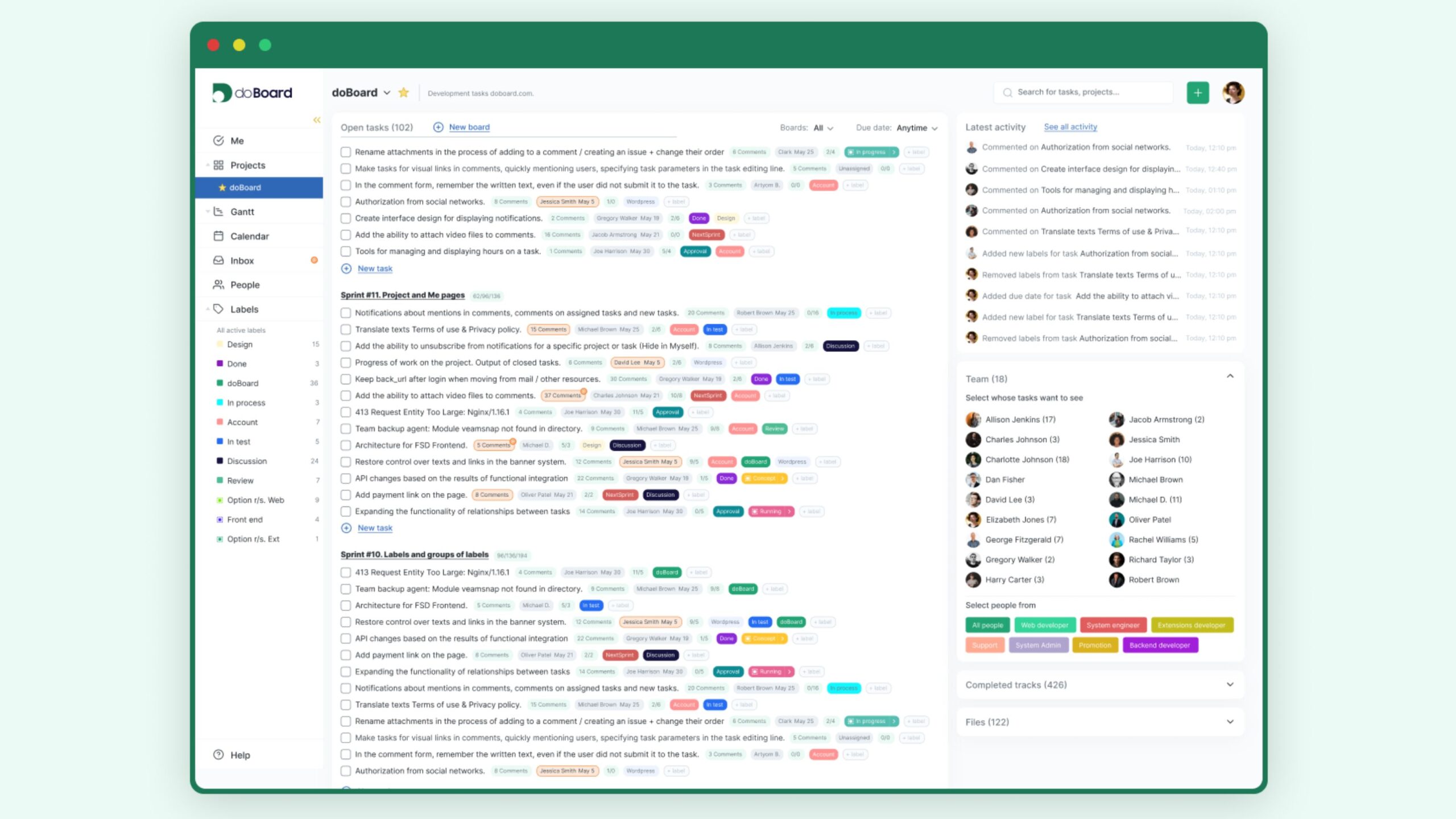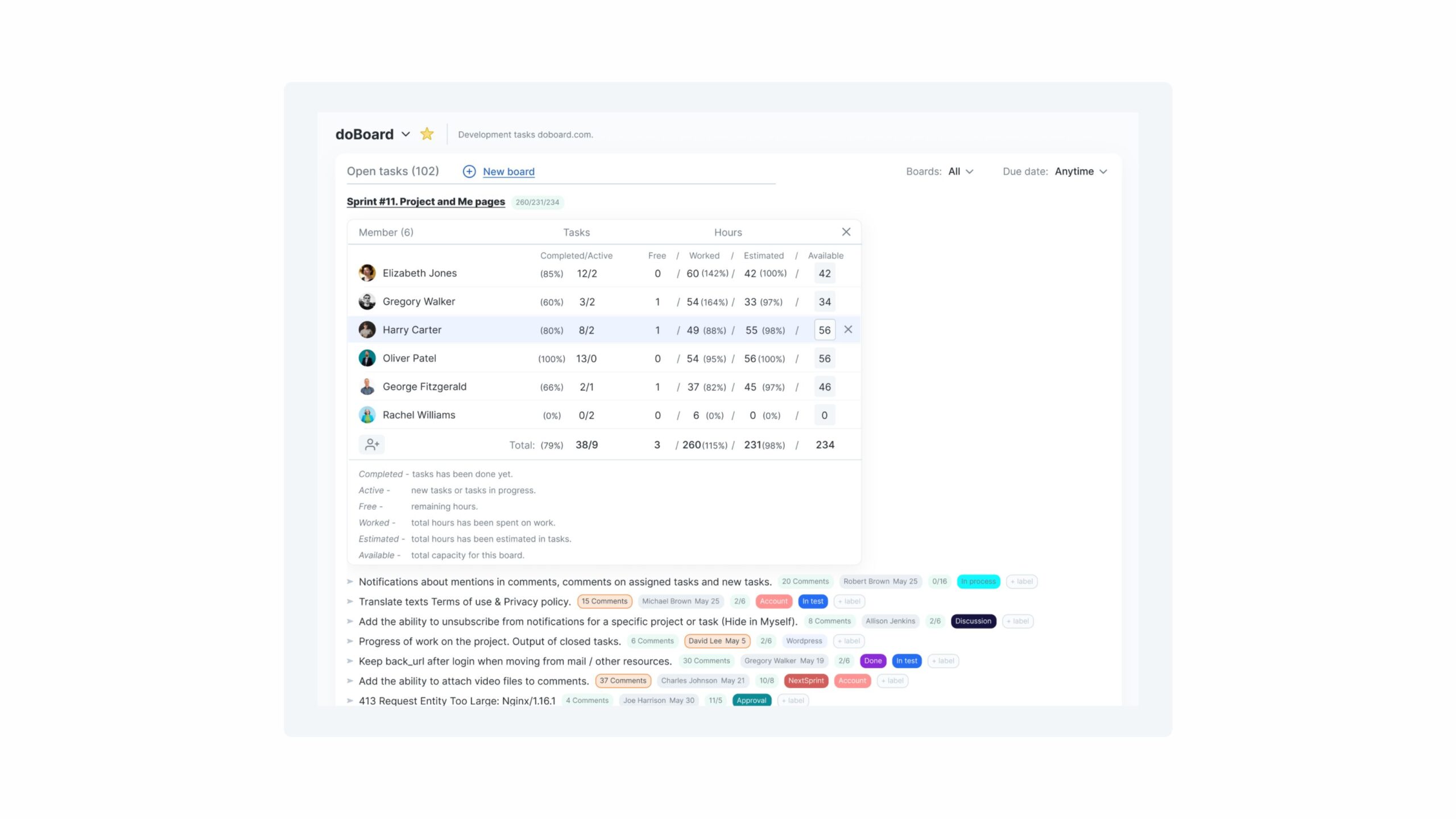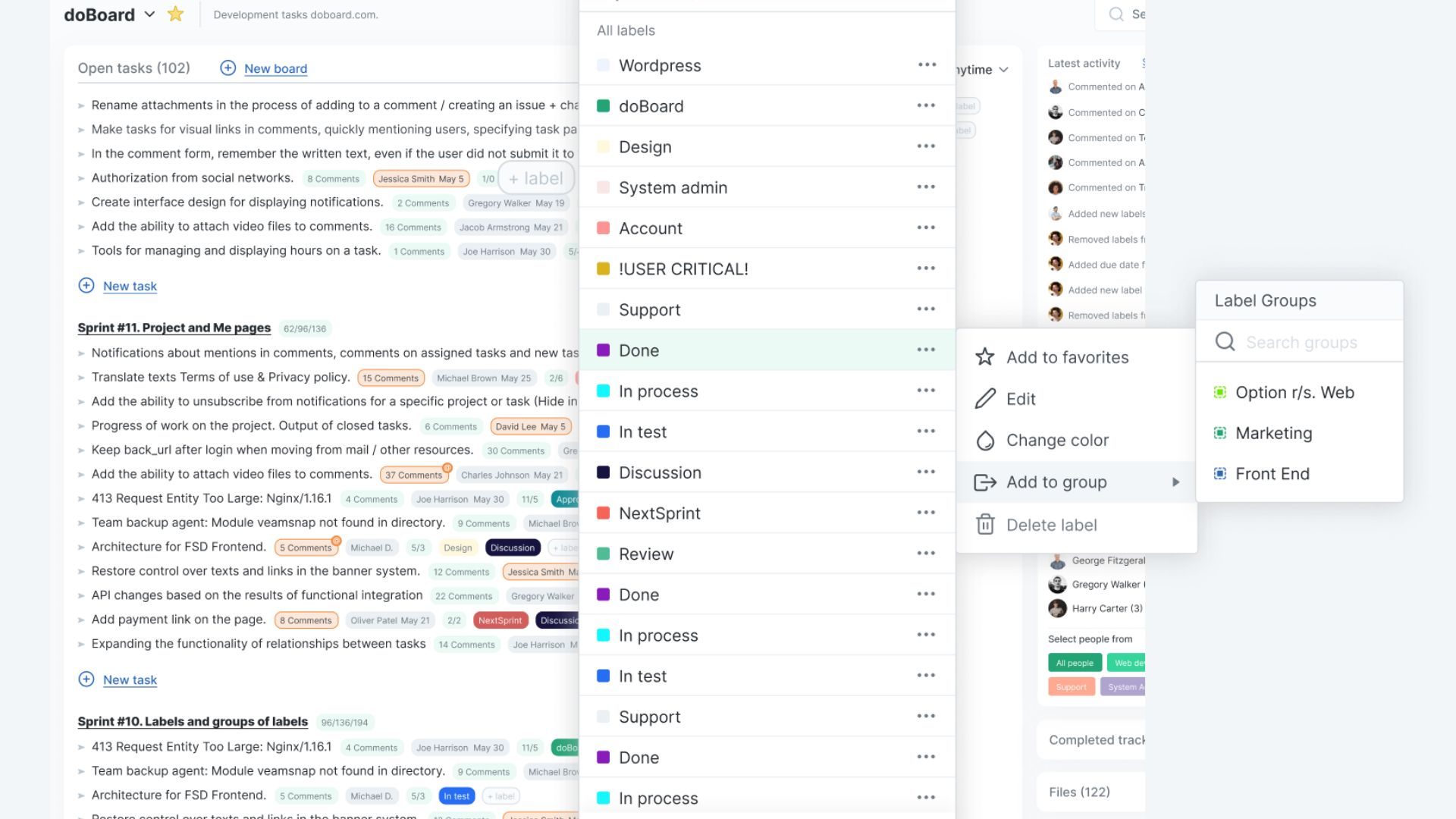Emphasizing the importance of adaptability and time management in Agile with doBoard.
When I joined the doBoard team six months ago, I wasn’t new to product management — however, I was new to a team that truly lived and breathed Agile. At first, I assumed task managers were all the same: oversized boards, endless fields, and status updates that made more noise than impact. But then, I started using doBoard — and found a different rhythm. Gradually, it started changing how I saw teamwork entirely.
To be clear, we didn’t build doBoard to impress investors with flashy dashboards.
Instead, we built it because remote teams kept saying the same thing.
Over and over, we heard: “We need better time management in Agile — without the overhead.”
Ultimately, they didn’t want to manage the work about the work.
What they really wanted was to move.
1. Sync, not status: Real-time visibility beats process bloat
I’ve sat through my share of standups that felt like reading off a spreadsheet. So when we designed doBoard’s task view, we prioritized live team sync over fields for fields’ sake. You instantly see what your teammates are working on, where they’re stuck, and what’s getting in their way — without needing to decode a Gantt chart.
This approach is grounded in Agile principles like transparency and continuous feedback. We took that seriously.
See how doBoard’s real-time dashboard makes it easy

2. Sprint planning that doesn’t make your brain hurt
Unlike most tools, our sprint planner wasn’t born in a boardroom.
Instead, it came from me sitting with a designer, a dev, and a content lead, trying to make sense of competing priorities. We asked: what if planning a sprint took two clicks? What if priorities were just… obvious?
Agile talks a lot about adaptive planning — and we made it effortless. No Gantt charts. No “strategic alignment sessions.” Just fast, human decisions.
Because time management in Agile with doBoard means less overhead, more clarity — and finally feeling in control of your week.

3. Time management in Agile with doBoard — simple, visible, human.
As a principle, Agile encourages value-driven delivery.
So rather than forcing teams to invent formulas, we built a simple method that asks: What’s urgent? What’s important? What can wait?
At one point, I remember a team telling us, “With doBoard, we finally stopped arguing with Jira.”
That moment stuck, because it said everything.
In the end, we’re not just a tool — we’re the place teams go to talk about what really matters.
Try prioritizing with empathy, not bureaucracy

4. Invisible automation that adapts to your flow
For starters, one thing I always hated about other tools? Triggers, scripts, hidden logic.
Every single time, it felt like I had to debug my task manager just to get basic things done.
By contrast, with doBoard, tasks flow naturally.
As you go, you move cards, statuses update on their own.
No confusion, no config dumps.
Just focus.
After all, that’s the Agile principle of simplicity at work — maximize value, minimize waste.
And ultimately, when it comes to time management in Agile with doBoard, that simplicity means your time goes where it counts — not into figuring out the tool.
Learn how automation just works

5. Time management in Agile with doBoard — built for flow, not control.
Let’s face it, some tools are clearly built to make one person happy: the manager.
Meanwhile, everyone else just suffers quietly.
So instead, we flipped that.
Because when your team actually loves the tool, your manager gets results — automatically.
Personally, I’ve seen that shift morale across entire orgs.
To be clear, we didn’t just adopt Agile to look cool.
Rather, we used it to ask, “What actually helps people work together better?”
For us, that meant intuitive UIs, fewer rules, and workflows that grow with your team — not against it.
6. Start fast. No manuals.
Let’s be honest, you know what Agile doesn’t have time for? 6-week onboarding.
I remember our first client demo. Believe it or not, they went live during the call.
Since then, that’s the energy we’ve kept.
By design, Agile favors working software over comprehensive documentation.
From the beginning, we took that to heart.
Today, over 70% of our teams report hitting their goals faster.
At the same time, team burnout dropped by 41%.
Importantly, we didn’t get there by adding more metrics — we got there by making Agile feel human again.
At its core, doBoard for Agile is not just another tool.
Rather, it’s a reflection of how modern teams actually work — with clarity, trust, and room to adapt.
And really, that’s what Agile was always meant to be.
Wondering how Agile teams handle prioritization without drowning in backlogs? Check out how doBoard helps teams prioritize what really matters — with just enough structure to stay flexible.
- How to Prepare for a Job Interview in 2025 — Remote Interview Tips, Checklist & Stories That Actually Help - December 15, 2025
- What Are Story Points (And Why They Actually Make Planning Easier) - December 15, 2025
- Milestone Project Management Made Simple — With Real Examples and doBoard - December 15, 2025